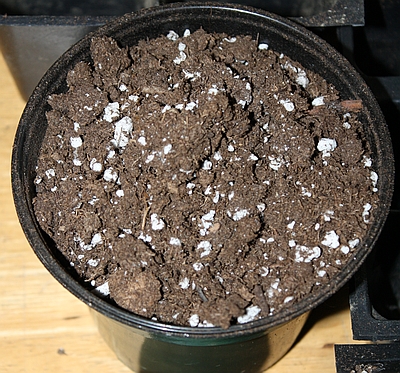Seed Starting
We should always keep seed starting simple. If you miss a tomato during clean up in the garden in the fall you’re likely to have tomato seedlings sprouting up in the spring. Nobody fussed over the seeds or planting them just so. They hit the ground and when the soil was the correct temperature, they germinated. Seed starting indoors can be just as easy.
You don’t need a lot to get started.
- a container for each kind of seed you’ll start (or maybe less…)
- starting medium
- seeds
- water
- marker
I use a professional grade mix for everything. Look for “seed starting medium” or similar wording in the garden department of your local hardware store or nursery. This medium is sufficient for seedlings because seeds have all they need for nutrition to get the seedlings to their first set of true leaves. The first “leaves” are cotyledons, a search party of sorts sent to get the work started. You don’t need to add anything but water to the medium. It’s light enough to allow good drainage and dense enough to properly cover the seeds.
Place the seed starting medium in the container and soak it with room temperature or warmer (but not hot) water. I fill a cookie sheet with containers, spray the medium gently with the hose and let them sit for a short time. The water that drains through is eventually soaked up.
A good rule of thumb is to plant the seed three times the depth of the seed. Look at the instructions on the seed packet. A pumpkin seed might need to be 1.5″ beneath the surface but a broccoli seed is going to be barely covered.
When reading the instructions on the seed packet make a mental note of light requirements. Some seeds need light to germinate.
Keep the medium damp but not dripping.
Be patient. Some seeds will germinate in a few days. If the plant grows well in cool weather (broccoli, cauliflower, kale, cabbage, spinach and beets, for example) the seeds will germinate quickly. If the plant needs warm soil and weather (such as tomatoes and peppers) you’ll wait longer to see the seedling pushing through the surface. I put “warm” seeds on a heat mat. A sunny window will add enough warmth to help speed germination.
Bottom heat speeds evaporation so keep an eye on the containers and water as necessary. Remove the heat mat when the first seeds germinate.
When the seeds germinates place the container under a grow light or put it in a bright window. Hang the light 1-2″ from the top of the seedling. Raise the light as needed.



